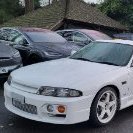Sending my car in for a 360kw setup next month, need advice.
Announcements
-
Similar Content
-
Latest Posts
-
Hi there, after a quick google search I found this topic as I am also relocating the battery to the boot of my 1998 GTT. I was just wondering how you got on with installing the re-routing and specifically the installing of the harness protectors? How do they attach? Are they just a simple "click-in" affair, or do they attach with bolts? Does the GTT have all the necessary fixing holes for them, for example, where they locate on the chassis? Any help you can provide would greatly appreciated.
-
Thanks mate, yeah I've heard that alot and i am definitely regretting using the 25 Loom now, i have gone through and traced all the plugs from the 20loom and re wired them into the 25 loom, I have currently got Crank, Fuel and accessory's working, just need to finalise the loom and run the wire for the Ignition (Spark) and it should be running, will update if i have any luck.
-
Cheers lad, when I head over there I'll give it a shot.
-
Stock less likely to carry one like that than urethane, but still can, especially if the bolts are not as tight as they should be. If it's making that much noise you should be able to use a hose as a stethoscope> stick one end in your ear, crouch down and wave it around the various possible noise makers and get someone to lift the front end at the guard lip.
-
Broken actuator rod. Could be one of a couple of them broken. Or, it's locked and the central locking actuator is broken/stuck or the actuator rods between it, the lock and the key barrel are jammed or broken similarly. You'll probably need a locksmith/mechanic who is experienced with using slim tools to reach down next to the window glass to manipulate the mechanism. That's assuming that it is not so severely jammed/broken that nothing useful will move.
-





Recommended Posts
Create an account or sign in to comment
You need to be a member in order to leave a comment
Create an account
Sign up for a new account in our community. It's easy!
Register a new accountSign in
Already have an account? Sign in here.
Sign In Now